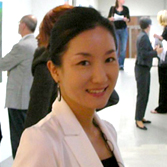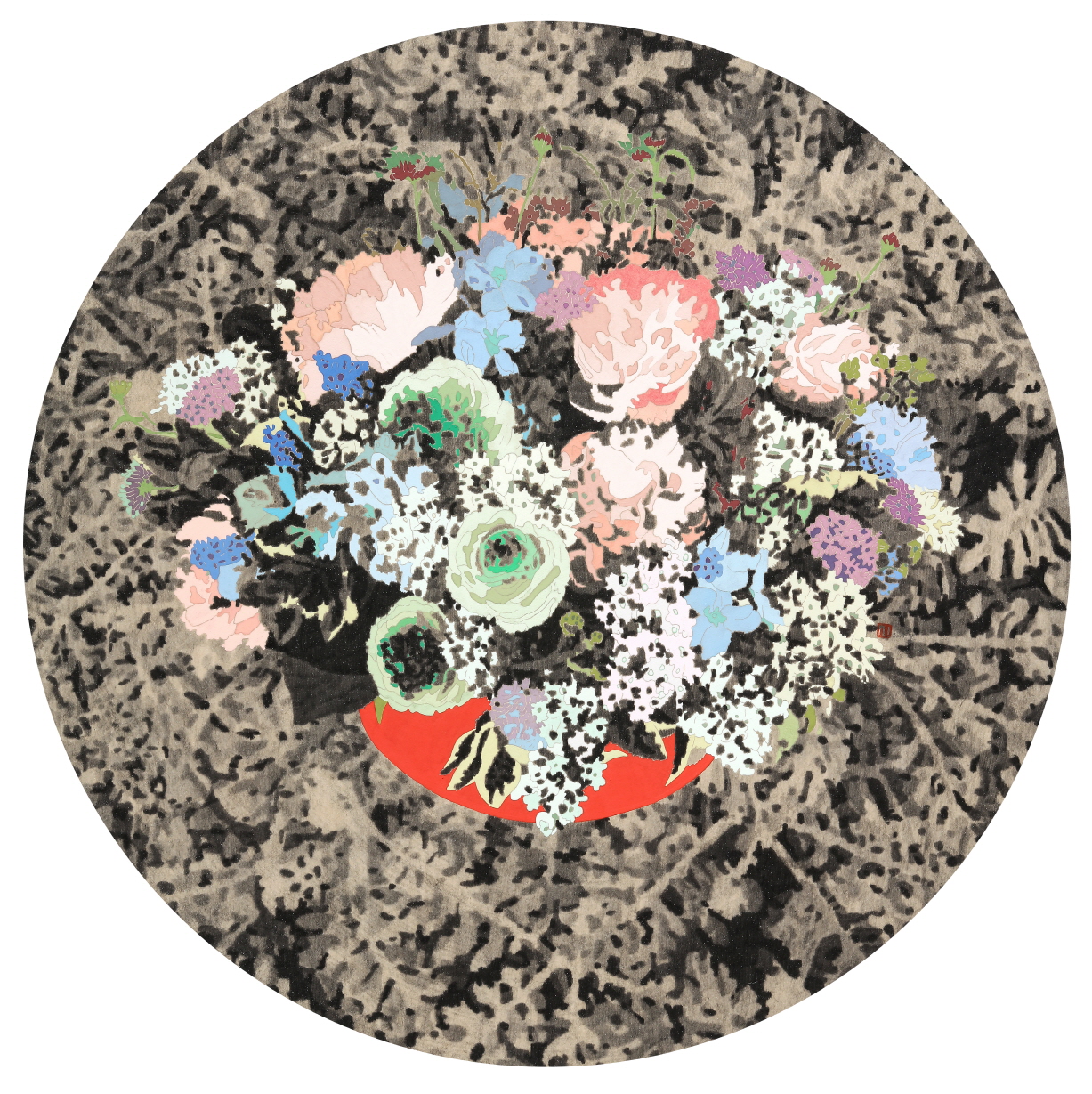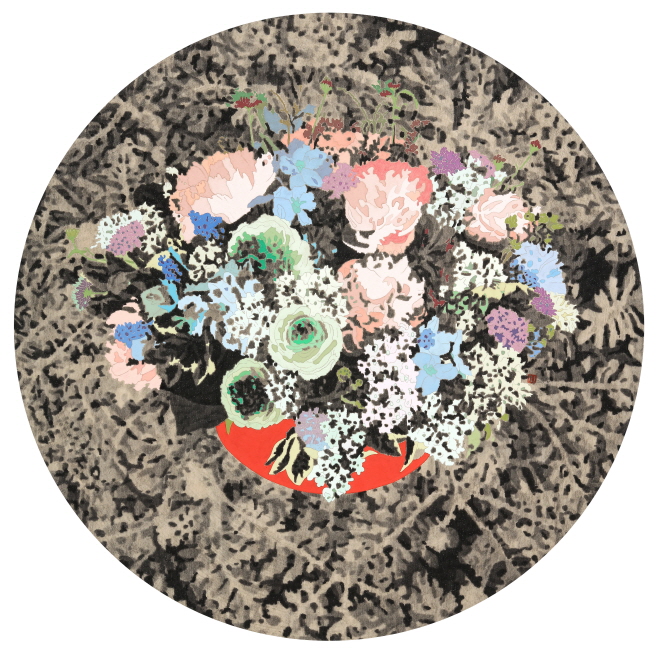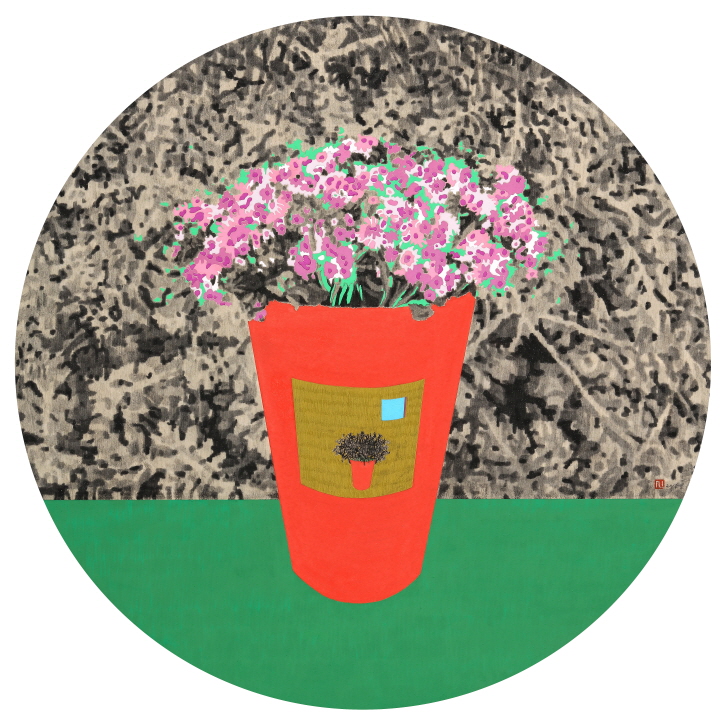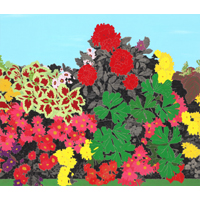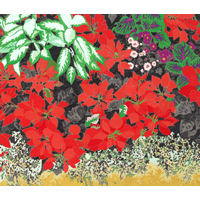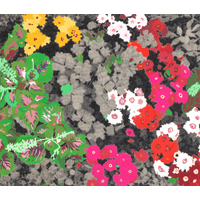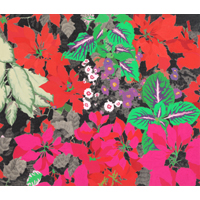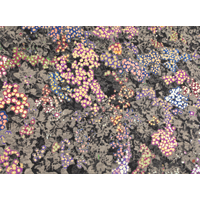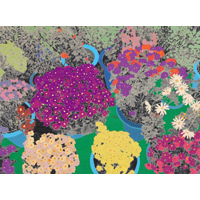The perceptible metaphysics to the Eastern and Western pictorialization
The work of Park Sang-mi reveals an uncanny feature arousing western sense with Korean painting background. It's probably because she is boldly introducing the intense and vibrant colors close to primaries rarely found in traditional Korean paintings and bold composition while maintaining Indian ink drawing. To know how the works of this nature was born needs to keep track of changes of Park Sang-mi from the time of completing her study at the art school to present as an artist. And most of all, we need to observe the trace that has been developed and changed through her work itself.
Park Sang-mi originally initiated the early work that captures symbolism and psychological tension on the screen through the series of India ink-abstract works. However, she has not only worked digging itself a metaphysical notion, but also developed works to maintain more realistic affairs focusing on the communication between the objects, specially plants or trees metaphorically represented living beings, and herself. The early work captures the existence of trees as living beings in the city, and more like to have a command of formative phraseology mainly expresses intellectual and urban feeling through addedly varying gradation went vertically down countless black lines on the screen in the manner of ink drawing.
The middle of the transition process between these India ink-abstract works and the work of today's is actively intervened the artist's personal experience and emotion in her work than before. At the same time, she put some colors or brought an object like a mirror as part of the work. Those facts expand the self-consciousness or the space, as well as, help us detect self-expression of monologue revealing of the inner surface in the way of the communication between the nature and self.
Some people detect the relationship holds communion with nature while appreciating the darkness of the forest as the totality of the trees or the metaphor of the city. Actually the artist once put stress on these communion and communication at <Space-Color of Mine> in 2005. She also mentioned willingness communication-oriented in the space as a symbolized forest, hope for acquiring her own space, and her position on the starting point carefully proceeding stories through colors.
The works at this exhibition are produced by adopting more actively this idea. In other words, the motif the artist selected was the space formed within the scope produced by the artist herself physically and mentally. The motif and formative element are a produced space by her experience, hope, and sometimes her thought or willingness, in that space, the artist realizes visual topography communicating with viewers or herself based on thought and skepticism rose to her mind while looking at the nature and objects.
The works, approximately twenty pieces, can be classified from the scenes observed up closed to potted plants to ordinary scenery observed from a distance, or plants somewhat unnaturally taken some spots at artificial structures. Among these, <scene-theirplace>, <beyond scene> and so on show trees abundantly growing in a form of black silhouette between structures, splendidly colored on their roof or wall observed from a distance in the same scene. It offers an experience of crossed transactions between realistic scenes and fantastically surreal scenes.
<stopped landscape> also shows the contrast among black trees, primary colored houses, and distant mountains or sky in monochrome. The artist was supposed to metaphorically express anonymous herself through black plants and circumstances surrounding her actively showing themselves through the colors and shapes brilliantly expressed in a relative sense.
At first glance, the works seem to be established coexistence of chromatic vs. achromatic and bold blocks of color fields, however, if you watch a little more in detail, she put in a great deal of effort to lead conscious sympathy between viewers and herself over the space of her own creation through metaphor and reminding while leaving traces like the similar colors repetitively appeared on the stems or leaves of the plants, the side of pots, and the floor in the structure.
On a closer view, potted plants or plants drawn as planted form in the yard, those are mostly lack of viridity and refreshment. The artist explains the shapes of the stems and leaves from a same root by using the concept of Dagaeche (多個體), representing one human's multiple personality in modern society, can help us understand the background of it.
When Park Sang-mi's works are read as visual images, these let us go through uncanny formative combination of paintings of the Eastern and Western in the way of coexistence of Indian ink and showy colors. On the other hand, when it comes to psychologic interpretation over the objects and the spaces metaphorically appearanced in the works, we can get a sense of the artist's metaphysical interest that can be read surreal psychology beyond reproducing reality. And, it seems that the artist gladly allows to make our choice as viewers at the two paths.
Ha Gyehun (art critic)






